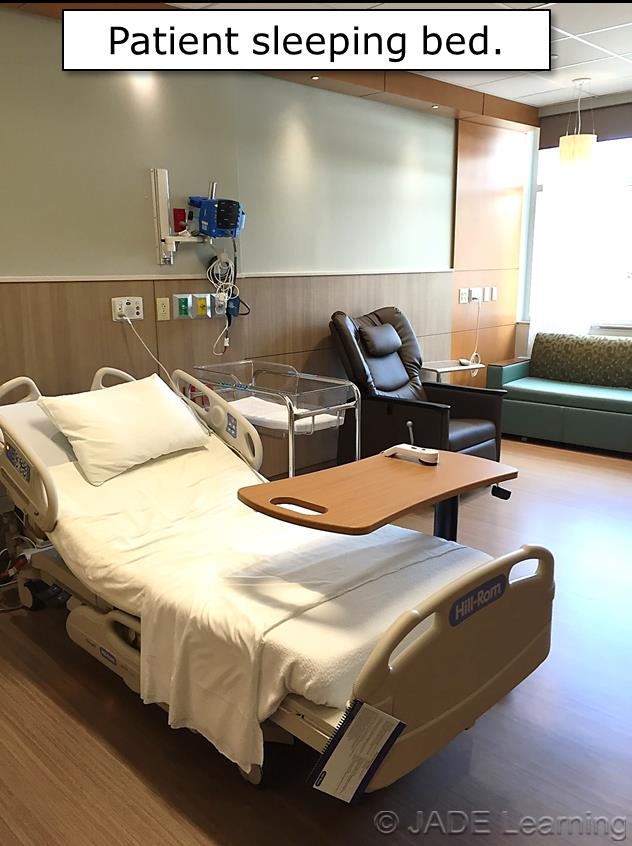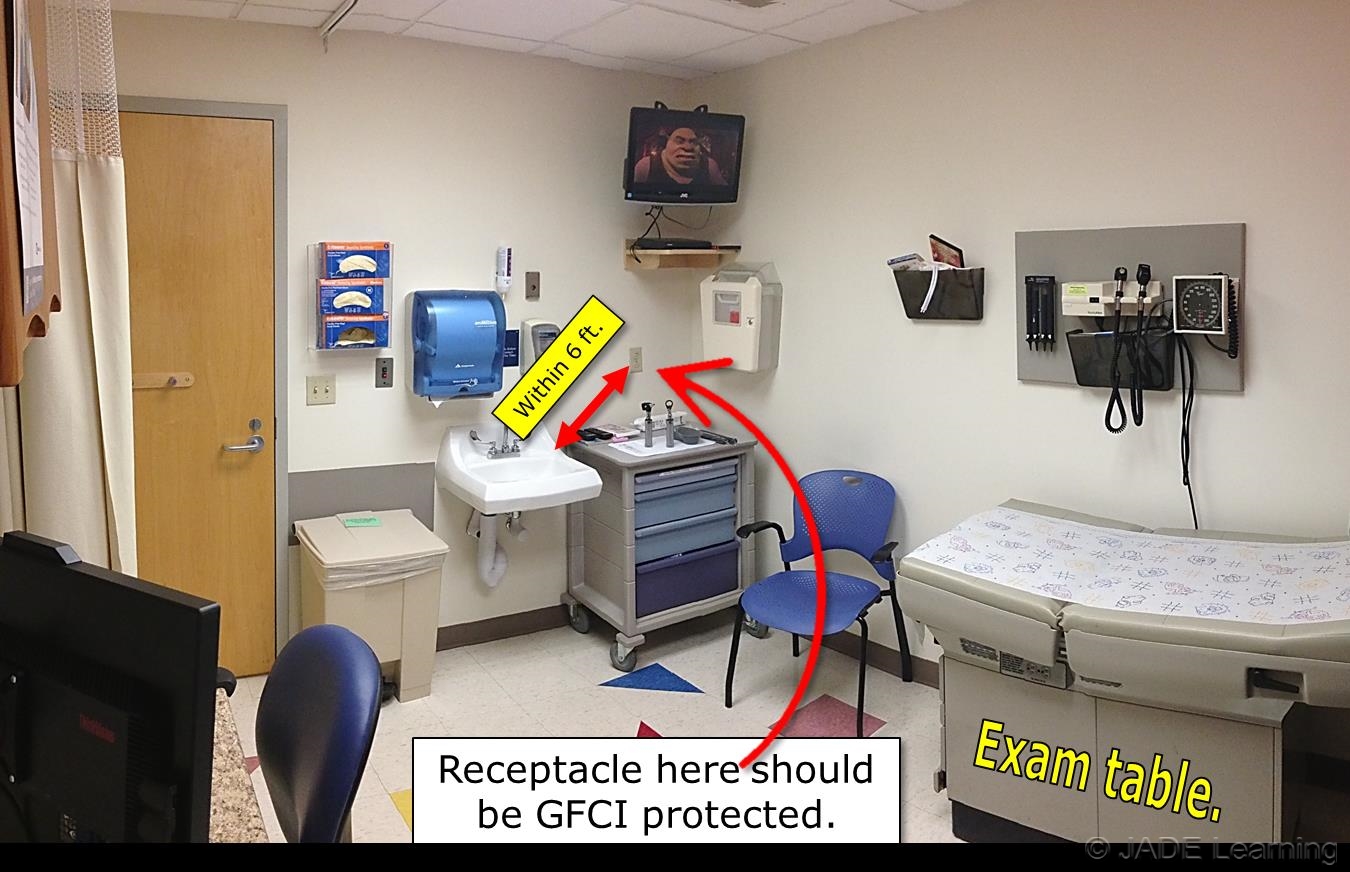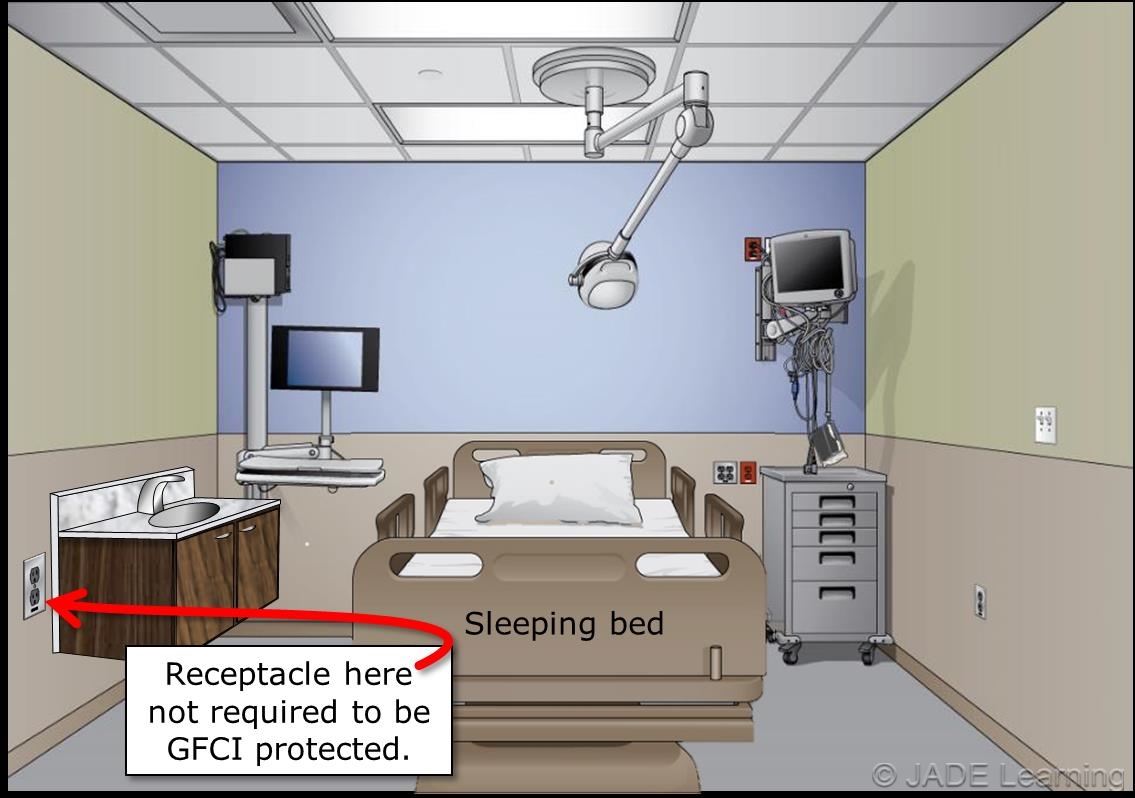GFCI Protection for Health Care Receptacles
By: Dennis Bordeaux | Nov 18, 2015
Most exam tables at the dentist or doctor’s office are not “patient sleeping beds”. A patient sleeping bed is usually found in a health care facility’s patient room rather than in an exam room. Typically, these beds have sheets and pillows, rather than paper covering over vinyl. In an exam room, without a sleeping bed, GFCI protection is still required within 6 ft. of the sink. If there is a sleeping bed in the room (sheets and pillows), then GFCI protection is not required.
In a critical care area, if there is a patient sleeping bed or a procedure table, GFCI protection is not required within 6 ft. of the sink. A critical care space is defined in the 2014 NEC as: “Space in which failure of equipment or a system is likely to cause major injury or death to patients or caregivers.”
In health care facility bathrooms, GFCI protection is required if a receptacle is within 6 ft. of a sink.
Summary:
- In health care facilities, GFCI protection is required for receptacles that are within 6 ft. of the sink.

Receptacle in an exam room should be protected if it is within 6 ft. of a sink. - In a patient room with a sleeping bed, GFCI protection is not required within 6 ft. of the sink.

Receptacle in a patient room within 6 ft. of a sink is not required to be GFCI protected. - In a critical care area, GFCI protection for receptacles that are within 6 ft. of the sink are not required if there is a sleeping bed or a procedure table.
To learn more about receptacles and the 2014 NEC, take an online electrical continuing education course from JADE Learning.

